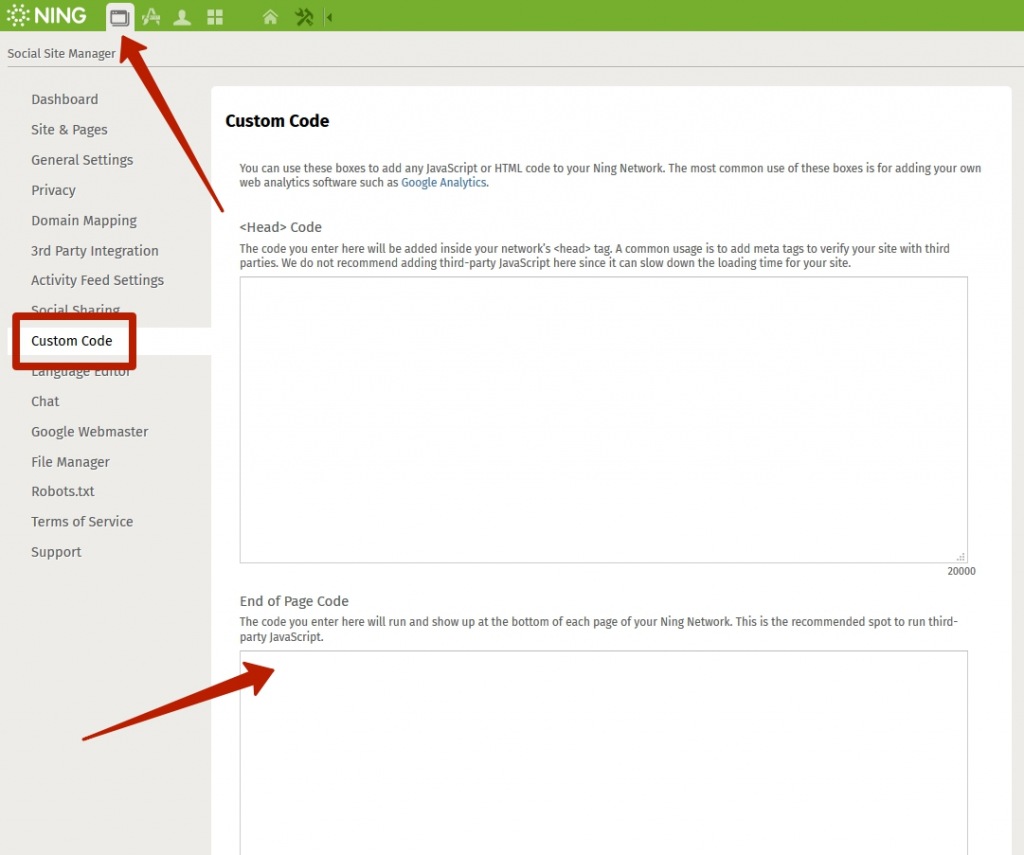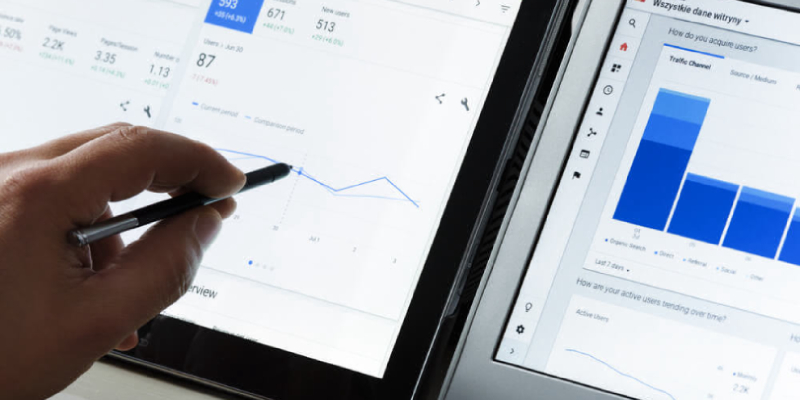Google Analytics for Beginners: Metrics Every Website Owner Must Follow
Technology
When you start a website, you have very specific goals in mind. What are yours? Do you want to promote your business, expand your customer base, sell products online, make money from ads? Maybe you don’t even pursue any business goals and just use your website for personal development and communication. Anyway, if you own a website, you’ll want to know how successful it is, how many people know about it, and who are the visitors. But what is the best way to find out? Without a shadow of a doubt, it’s an online tool you’ve probably heard about – Google Analytics.
What is Google Analytics?
Google Analytics is a software system that allows you to keep track of all your website metrics. Why do you even need this kind of data? Very simple – to know where your website is at. No matter what goals you are trying to achieve, you’ll need to measure how effective your efforts are. This is why you require tools that will help you obtain statistical and analytical information on the basis of which you can decide whether you’re doing well or need to make some amendments to your ongoing development strategy.
In other words, you need Google Analytics to see if you’re making any progress in achieving the goals set for your website. Being armed with accurate analytical data, you can flexibly adjust to changing conditions and make improvements where they are due.
Let’s take a very simple example to illustrate the functions of Google Analytics. You’ve created a website on Ning and are going to make money by offering a paid membership or paid access to your premium content. First and foremost, you’ll have to set it all in motion by developing some quality content and promoting it. You’ll start with writing useful articles for your target audience, set up a blog, forum, etc. At first, you will deliver content for free to draw attention to your site, earn some credibility, and attract more potential customers.
However, to be able to achieve solid results in the shortest time possible, you will need to know in which direction your efforts should be channelled. You’ll want to figure out:
- how much traffic you’re getting,
- what kind of audience is attending your website,
- where they reside,
- how old they are,
- where they are coming from,
- how they interact with your website,
- what content is particularly interesting for them, etc.
This is where Google Analytics comes in. Having obtained the answers to these and many other questions, you will see how much easier it is to manage your website and make it grow. With the information provided by Google Analytics, you’ll know what works best for your audience and what you still have to improve. For a newly initiated website owner, this information is pure gold.
What exactly can Google Analytics do?
Google Analytics is incredibly versatile. It measures every aspect of your website and delivers all kinds of statistics you would possibly need to know. And the best thing is, it does the job in a fully automatic mode.
Here’s what you can do with the help of Google Analytics:
- Measure how much traffic is generated by your website;
- Determine the traffic sources;
- See how many unique users are coming to your website within a given period of time;
- Track how many new visitors your website is receiving and how many users return to it;
- Determine how much time on average people spend on different pages of your website;
- Monitor which site pages receive the most views and which pages are not as popular;
- See how visitors behave on your website, how they interact with its elements, and how many users leave the site without finding the information they need;
- Keep track of your audience demographic, determine their geographical location;
- Define how people find your website, where they are coming from, and what keywords they use.
These are only the basic ways to use Google Analytics. The system offers a variety of features, and some of them are quite advanced, so you might consider exploring them later when you master the basics and learn how to use the acquired analytical data to your advantage.
Getting started with Google Analytics
If you don’t use Google Analytics, you’re missing out on vital data that can help your website improve. To get started, you’ll first have to create a Google account. Apparently, if you have ever used any other services by Google, you must already have your own account.
Once you log in, go to Google Analytics and sign up for the service. You’ll have to specify your website URL and customize a couple of simple settings – just follow the instructions provided by Google.
Then, receive your tracking code and insert it in the code of every page you want to collect statistics about. This step is very important because Google Analytics won’t be able to “see” the page unless the tracking code is inserted. If you don’t know how to do it, send the tracking code to the person who’s in charge of managing technical issues of your website.
A tip for Ning users:
To set up Google Analytics on your network, just copy the tracking code, go the “Custom Code” tab of your Ning Social Site manager, and paste the code into the “End of Page Code” block. Click “Save” and you’re ready to go!

In a few hours, Google Analytics will be ready to provide you with the first reports concerning the attendance of your website, its audience, and their behavior.
Key metrics to follow in Google Analytics
As you dive headlong in the intimidating diversity of metrics presented by Google Analytics, it might be a bit difficult for a beginner to figure out what is what and which indicators should be monitored in the first place. But don’t worry, no need to run and search for a guide on Google Analytics for dummies. We’ve picked the most important metrics you should keep an eye on to see whether your website is doing well.
Audience – your visitors
- Overview > Sessions: The total amount of traffic your website is getting. In this section, you can see how many visits to your site were made within a specific period of time. One person can account for several sessions, so don’t confuse the overall number of sessions with the number of individual visitors.
- Overview > Users: As opposed to the previous indicator, this one measures the number of users who visited your website at least once. Therefore, you can see how many unique visitors your web page has got. Also, the graphical chart on the right will let you know the percentages of new and returning visitors.
- Overview > Pageviews: Metrics defining the total number of pages viewed/loaded by users.
- Overview > Pages/Session: Number of pages viewed per session. Pay attention to this metric to check your visitors’ engagement level.
- Overview > Average Session Duration: Indicates how much time on average users spend on a given web page. The metric helps Google to define the quality of your content: the longer visitors stay on your website, the better it is rated. This increases your chances to rank higher in search results. And on the opposite, if visitors leave too soon, Google assumes they cannot find the necessary information or your content uses keywords misleadingly.
- Overview > Bounce Rate: Another metric used by Google to determine the content quality. Bounce Rate defines how many users leave your site without interacting with it. That is, if a user doesn’t click on any active element on a web page, a session cannot be tracked. For Google, it is a sign that the information presented on a page is not relevant. Thus, you’ll want your Bounce Rate to be as low as possible.
- Demographics: This section allows you to see what kind of audience is most interested in your website. You can find out their gender and age in order to develop a corresponding brand voice and adjust your content strategy.
- Interests: The best place to check who your visitors are and what they are interested in. In this section, you can find affinity categories and in-market segments your audience belongs to. No need to say, this is a vital information for successful marketing.
- Geo: Here you can find out where your visitors are from and what languages they speak. A distinctive graphical presentation in the form of a global map gives you a clear picture of the situation.
Acquisition – your traffic
- Organic Search: Traffic you get from search engines. If your organic traffic is high, you’re using the right keywords. If not, make a thorough keyword research (Google Keywords Planner can help you with that) and bring your content in line with the most popular queries in your niche.

- Email: Traffic generated when users click on the links provided in your emails (newsletters, promotions, etc.).
- Direct: Traffic from your most loyal followers. It is generated when users enter your website URL directly into their browsers.
- Social: Traffic received by your website from social media platforms like Facebook, Instagram, LinkedIn, Google+, Twitter, etc.
- Paid Search: Traffic from paid sources. Shows how effective your paid ads are.
- Referral: Traffic from other websites. If your site is frequently referred to on other web resources via links, you get referral traffic.
- Other: Traffic coming from the sources that cannot be identified by Google Analytics.
Behavior – your most popular pages
This section shows which pages of your website are visited the most. You can see them arranged by order, from the most successful ones to those favored the least.
This information is extremely valuable as it allows you to see how the specific pages are performing and build your further strategy based on the obtained data. The feature is particularly useful for content marketing. With its help, you can determine which articles or blog posts resonate with the audience and which ones do not deliver the desired results. This enables you to plan your future posts more effectively and come up with the topics your visitors are interested in.
Time to go analytic!
No matter what the purpose of your website is, analyzing its effectiveness is one of the keys to its success. Google Analytics has proved to be a reliable source of accurate analytical data. It is easy to set up and convenient to use, so even if you don’t have much experience in website monitoring and management, you will be able to grasp the basics and start using the tool in order to maximize the performance of your site.

